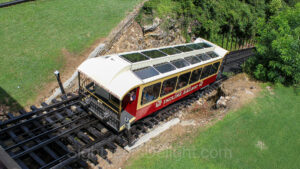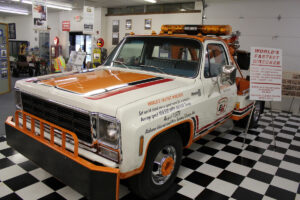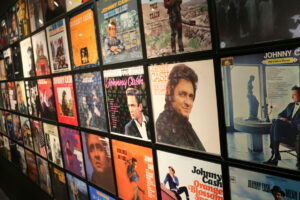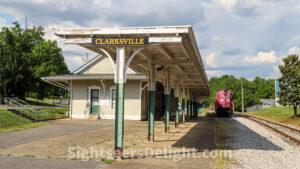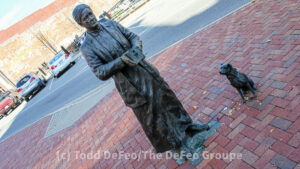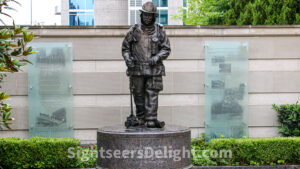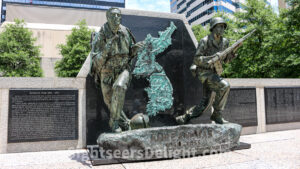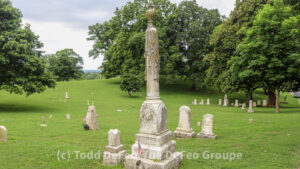The Lookout Mountain Incline Railway is one of the most popular attractions in Chattanooga. The railroad, which opened on Nov. 16, 1895, is the last reminder of a once vibrant railroad scene that existed on Lookout Mountain. It’s also a great reminder of what a great railroad town (and great town in general) Chattanooga is. Of course, once you take the railroad to the top, you’ll be reminded why Chattanooga is the Scenic City.
37409
Thanks to mechanic Ernest Holmes, Chattanooga is inextricably linked to the world of towing. Holmes invented the tow truck in 1916 in Chattanooga, Tenn. Today, those trucks are indispensable emergency vehicles throughout the world. So, it makes sense the International Towing & Recovery Museum would open here in September 1995. Over its more than 20-year history, the museum has amassed a collection that includes antique and modern tow trucks, photos and related toys. Outside the museum stands the Wall of the Fallen memorial, which includes the names of towers killed in the line of duty.
37408
A statue honoring John Montgomery, the namesake of Montgomery County, was erected in 2002. While on a hunting expedition, Montgomery claimed Clarksville, Tennessee’s second oldest city. The city is named for Gen. George Rogers Clark.
The Johnny Cash Tennessee, Museum opened its doors to the public in May 2013. The museum, located in downtown Nashville, features a remarkable collection of Cash artifacts, including the standard concert posters and album covers. But the museum’s collection includes more off the beaten path artifacts such as the first wills of Cash and his first wife, Vivian; an artist royalty check from 1957; tin cups from Folsom Prison given to Cash in 1968, and handwritten lyrics of “Walk the Line” that cash wrote in 1990 for museum founder Bill Miller.
37201
Today, the “L&N Depot” is a centerpiece of the Clarksville, Tennessee, community and a popular gathering place for the community. It is also a gateway to the city’s railroad history. Long before the city purchased the historic structure, the railroad building served as the gateway to the community. The depot’s history harkens back to the earliest days of railroading in the community — and the Memphis, Clarksville & Louisville Railroad.
37040
In April 2007, a statue was unveiled in downtown Clarksville, Tennessee, honoring Lenora “Nora” Witzel, who has been described as a pioneer and a rebel. Witzel (1875-1968) photographed Clarksville’s architecture and people for nearly three decades. She worked out of her photography studio at the ML Clothing Store on Franklin Street and is considered a pioneer of early 20th century small-town photography. Andrea Lugar of Lugar Art and Bronze Foundry in Arlington, Texas, created the life-sized bronze cast of Witzel and her dog Nettie.
37201
37350
Riverview Cemetery in Clarksville, Tennessee, was established on February 23, 1800. Early settler Valentine Sevier donated the land and is the first person recorded interred in Riverview. Its hillside location was chosen to avoid dangers, as traveling along the Cumberland River to flatter land would have posed risks. The cemetery is the final resting place for notable early pioneers and civic leaders. It also contains the remains of men and women from all American wars, including two Revolutionary War veterans and a mass grave of more than 125 Confederate soldiers, reinterred from elsewhere. Initially referred to as the “city cemetery,” its name was changed to Riverview Cemetery on June 7, 1929. Riverview, the city’s only cemetery, remains active and is regarded as the oldest known public burial ground in the region.
37040

